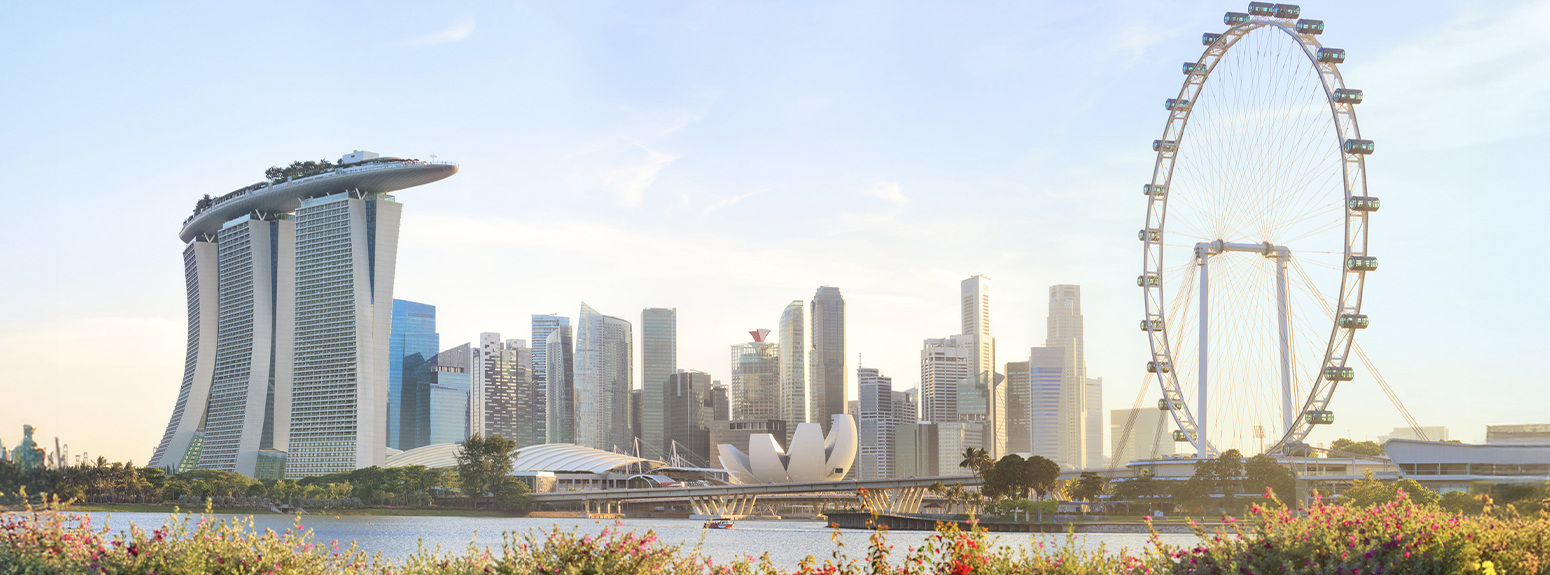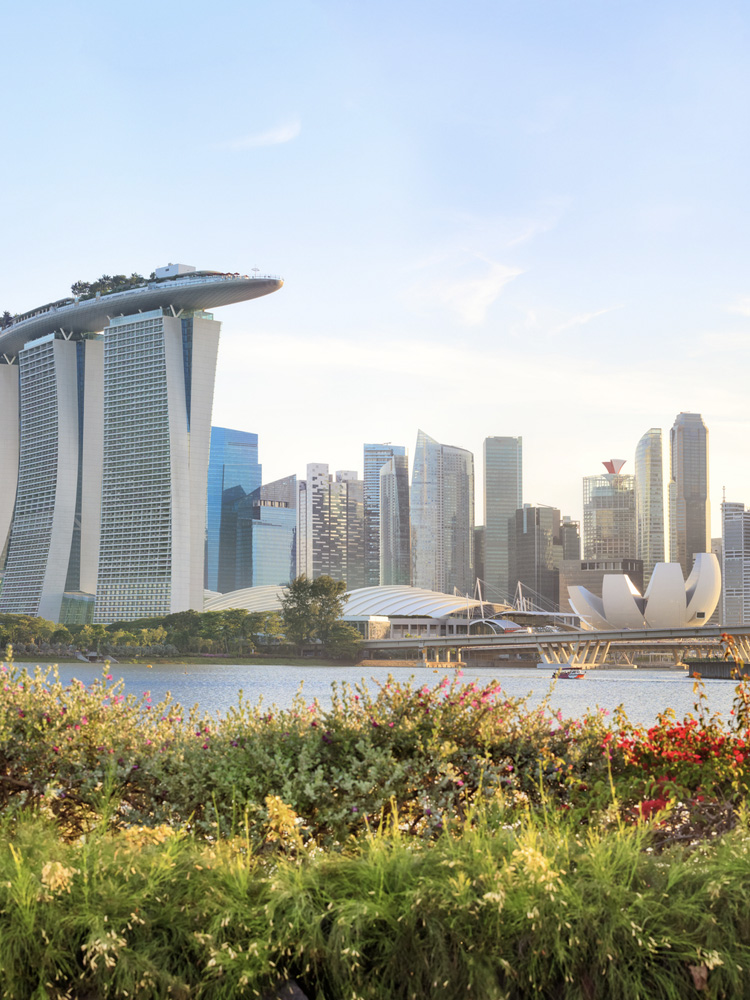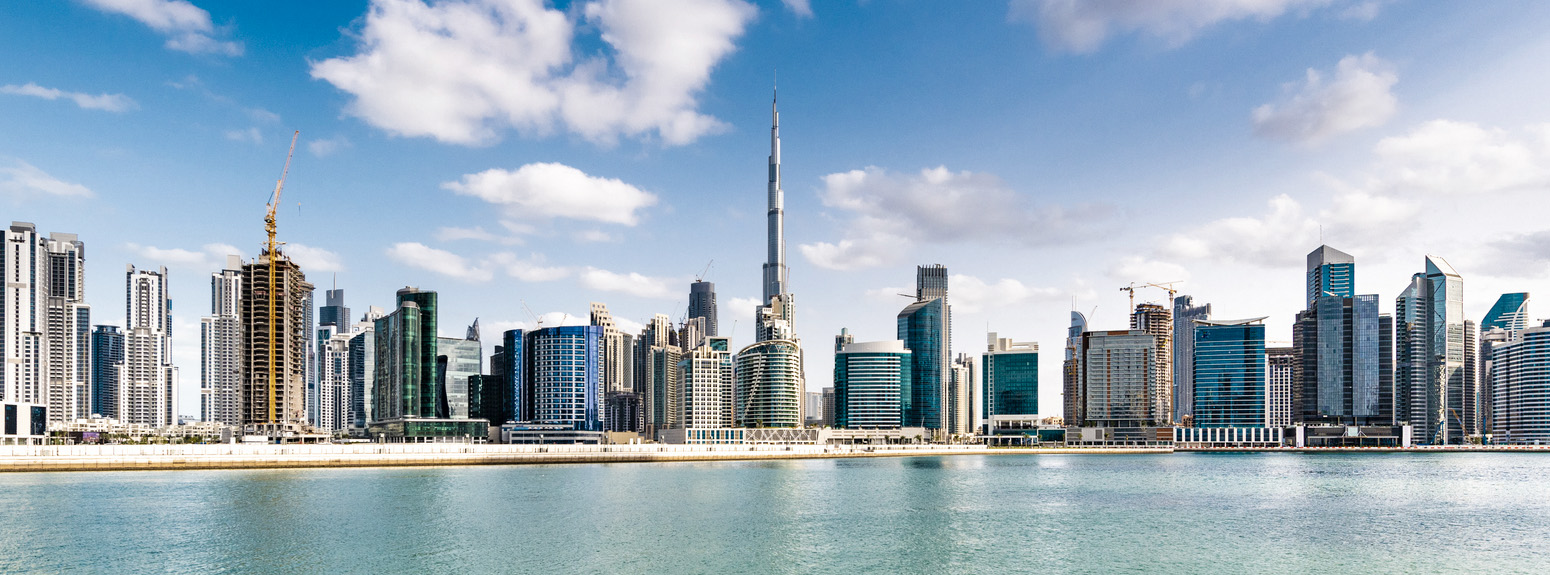1. Zurigo
2. Oslo
3. Ginevra
4. Dubai
5. Abu Dhabi
From Asia to Europe and across the Americas, Smart Cities are redefining the urban environment by focusing on digitalization, sustainability, and inclusion. The global market is worth over one hundred billion dollars, with startups playing a key role in the development of intelligent cities, as demonstrated by the international accelerator Techstars Transformative World Torino.
A Smart City is an urban area that places citizens at the heart of its development, incorporating information and communication technologies into the urban ecosystem to promote efficient governance - including collaborative planning processes between the public and private sectors - become more sustainable and improve the quality of life for its residents.


According to the United Nations, urban centers currently host 56% of the world’s population, and by 2050 this figure is expected to rise to 70%, meaning more than 5 billion people. These are significant numbers, especially considering that cities, while covering only 3% of the Earth’s surface, are already responsible for 75% of global energy consumption and waste production, as well as 80% of greenhouse gas emissions, according to a World Bank report.
These figures highlight the importance of transforming urban centers into Smart Cities—more efficient cities that light and heat buildings using smart systems, improve water supply management, feature responsive and interactive city administrations, and offer safer public spaces.
The role of Smart Cities is also acknowledged in Goal 11 of the United Nations 2030 Agenda for Sustainable Development (SDGs), which, under the objective “Sustainable Cities and Communities”, aims to make urban areas and human settlements “inclusive, safe, resilient, and sustainable.”
This includes ensuring access for all to adequate housing, basic services, and sustainable infrastructure; promoting electric and eco-friendly mobility; reducing pollution; creating green spaces; providing access to smart housing and services; and protecting vulnerable neighborhoods within cities.
These premises explain why the global Smart City market is experiencing constant growth, with an estimated value of just under $105 billion in 2024 and an annual growth rate of 12.5%, with the value projected to reach $168 billion by 2028.
Globally, many urban areas have already long begun their transformation into Smart Cities. While there is no universally accepted set of criteria to determine which cities are at the most advanced stage, international rankings published annually provide a useful benchmark.
The most significant of these is the Smart City Index, published yearly by the Smart City Observatory, a collaboration between the World Smart Sustainable City Organization (WeGO), the IMD School of Management in Switzerland, and the Singapore University of Technology and Design (SUTD).
The ranking defines a smart city as “an urban context that applies technology to improve the benefits and reduce the shortcomings of urbanization for its citizens.”
It strikes a balance between technology and economics on one side, and the “human dimensions” of Smart Cities - such as quality of life, environment, and inclusivity - on the other.
In this context, the sixth edition of the ranking included a specific question for residents of the 146 evaluated cities about housing prices in relation to salaries, as this is one of the key challenges faced by contemporary urban centers. Broader insights were then developed based on the responses from city inhabitants.
The Top 20 Smart Cities globally in the 2025 IMD Smart City Index are predominantly in Europe (11 cities) and Asia (8 cities), with only Canberra representing Oceania though it dropped from third place in 2024 to eighth in 2025.
Specifically, the global top 10 Smart Cities for 2025 are, in order:
1. Zurigo
2. Oslo
3. Ginevra
4. Dubai
5. Abu Dhabi
6. Londra
7. Copenaghen
8. Canberra
9. Singapore
10. Losanna
Position 11 to 20 are occupied by:
11. Helsinki
12. Praga
13. Seoul
14. Pechino
15. Shanghai
16. Lubiana
17. Amsterdam
18. Stoccolma
19. Hong Kong
20. Amburgo
The 2025 IMD Smart City Index includes three Italian cities, all of which have lost ground in the ranking. Bologna is the highest-ranked among them, falling from 78th to 83rd place. Milan ranks 97th (down 4 places), and Rome comes in at 139th (down 5 places).
North America, which fell out of the Top 20 for the first time in the previous edition of the index first published in 2019, remains absent due to worsening infrastructure and safety conditions.
In 2025, Boston is the highest-ranked U.S. city, rising to 35th place (+1 from 2024), followed by Ottawa at 42nd. New York, internationally recognized as the smartest city in the U.S., ranks only 49th.


From Asia to Latin America, from Africa to North America, Smart Cities are developing in highly diverse contexts, adapting technologies to local needs: sustainable mobility, data management, digital access, and social inclusion are just some of the priorities for transforming into intelligent cities. Several examples demonstrate the types of projects being developed according to geographic areas and their respective characteristics.
Singapore ranks among the smartest cities in the world across various indexes and has consistently held a top 10 position in the IMD Smart City Index since 2019. The Asian city-state, the second most densely populated in the world, launched the Smart Nation initiative in 2014. This initiative has been implemented using digital technologies to improve transportation, public administration, healthcare, and security. Singapore also aims to be the first country to develop an eco-smart city completely free of vehicles. The project involves the construction of five smart residential districts in the Tengah area, located in the western region of Singapore, with 42,000 homes, as well as pedestrian and cyclist-friendly zones.
In recent years, Dubai has established itself as a benchmark for urban innovation. With the launch of the Dubai Smart City Project in 2013, the city has invested in key sectors for transformation into a Smart City: transportation, energy, security, and governance. Dubai features an intelligent public transport system based on an automated metro and electric buses and trams, supported by smart apps and sensors to enhance travel and reduce traffic congestion. Additionally, the city uses smart technologies to minimize its environmental impact through optimized consumption of water and energy. Dubai is also one of the safest cities in the world, thanks to advanced video surveillance systems based on data collection and analysis. Aiming to become the smartest city in the world by 2030, Dubai is set to adopt futuristic technologies including flying taxis and 3D-printed buildings.
Tokyo, a megacity with nearly ten million residents, stands out globally not just for its technological components but also for its people-centric approach. For instance, Japan’s capital consistently invests in achieving major sustainability goals, aiming to reduce greenhouse gas emissions by 80% by 2050. Hydrogen plays a particularly crucial role in this vision and is poised to become the fuel of the future for transportation. A standout “smart project” is Kashiwa-no-ha Smart City, a model district for sustainability featuring a smart grid, low-energy buildings, and water reuse systems. Naturally, robotics and AI are also integral to Tokyo, with robots serving as assistants in airports, hotels, and train stations to help both residents and tourists.
After reaching third place in the 2024 IMD Smart City Index, Australia’s capital fell to ninth place in the latest edition. These rankings were earned thanks to efforts in sustainability and digital transformation, focusing on the quality of life for both citizens and visitors. Canberra has launched and implemented various hallmark Smart City solutions, including the Zero Emission Vehicle Strategy, which aims to promote the use of electric transport to reduce CO₂ emissions. Another initiative is the development of a Digital Twin, which - through a network of IoT sensors - allows for real-time monitoring and management of various urban functions. This enables local authorities to collect data on traffic flow, energy use, and water resource management to make data-driven decisions and improve public services.
Over the past five years, Abu Dhabi has climbed the IMD Smart City Index rankings, rising from 14th place in 2020 to fifth in the latest edition. This recognition highlights the success of the Emirati capital’s governmental approach, which has addressed the issue of public transportation, gaining high approval from its residents thanks to 90 million rides taken last year. Additionally, 168,000 citizens now use the smart water network. In 2024 alone, Abu Dhabi invested nearly one billion euros in mobility and new road infrastructure projects, including a double bridge designed to ease traffic peaks and reduce delays on Al Kahleej Al Arabi Street. The city also boasts green spaces and smart parking solutions, as well as attention to the aesthetics of public areas, for example through the Abu Dhabi Canvas initiative aimed at celebrating the country’s artistic and cultural heritage.
The Big Apple is among the most advanced Smart Cities in the world, thanks to numerous smart projects and initiatives aimed at improving quality of life, sustainability, and urban efficiency. The city has implemented intelligent traffic management systems, such as the Midtown in Motion program, which uses sensors and cameras to optimize traffic flow and reduce delays. Additionally, New York is committed to sustainability by replacing polluting vehicles with those powered by renewable energy, increasing the number of electric vehicle charging stations, and launching the Citywide Climate Initiative, which aims to reduce greenhouse gas emissions and make the city a model of sustainability. Lastly, through NYC Smart, the goal is to make New York the most digitally advanced city in the world by developing smart projects for resource management, safety, and healthcare.
California’s largest city is also a global Smart City leader. Faced with overpopulation and traffic congestion, Los Angeles has embarked on an ecological transition with the goal of being powered exclusively by clean energy by 2035, thereby improving the health and quality of life of its residents. Looking ahead to the 2028 Olympics, the city is enhancing its fiber-optic connectivity infrastructure as well as expanding electric vehicle charging stations, in line with the roadmap set by the SmartLA 2028 digitalization project launched in 2020. Furthermore, the megacity is investing in a smart LED urban lighting system controlled by software that uses IoT sensors to also detect noise pollution. Los Angeles is also home to numerous tech companies that contribute to the development of smart solutions for the city’s transformation.
Over the past twenty years, South Korea’s capital has increasingly transformed into an intelligent metropolis. For instance, with the Seoul Metaverse initiative in 2023, the city launched its virtual twin in the metaverse. This project is part of the ambitious Seoul Vision, backed by substantial investments, pursues several smart goals: creating a discrimination-free and inclusive culture and environment, developing and supporting local brands, promoting accessible areas, aiding young innovative startups, creating an innovative ecosystem offering employment opportunities for those over 50, providing opportunities for disadvantaged youth, and preventing isolation and loneliness among citizens through smart technologies. To achieve these objectives, the city plans to increase the use of technologies such as blockchain, IoT, Big Data, and AI, along with its extensive public Wi-Fi network (Seoul Free Wi-Fi) and its e-governance system designed to foster an innovative urban culture based on IT and data.
China has been investing in the transformation of its cities into Smart Cities for over a decade, aiming to address pollution issues and improve sustainability, as well as to optimize energy management and citizen behavior. Within this framework, Beijing stands out for its multiple initiatives geared toward becoming smarter, focusing particularly on advanced infrastructure, 5G technology, and digital services with the goal of improving urban efficiency. A particularly noteworthy Smart City project on a global scale is Xiaoang: a city built 100 kilometers from the capital to host 2.5 million inhabitants. According to government plans, it is meant to serve as a model for an environmentally friendly smart city equipped with ultra-fast connectivity and innovative infrastructure. More broadly, Beijing aims to become a global hub for next-generation services, with a strong focus on advanced connectivity and digital solutions.
Thanks to its innovation ecosystem, electric mobility, connectivity, and environmental awareness, the Chilean capital has successfully integrated with its population of over 6 million people (8 million including the greater urban area). It also stands out for its progress in applying the Circular Economy paradigm within the South American Smart City landscape. Indeed, Santiago has adopted technologies for efficient energy and water management, promoting sustainability and reducing its environmental impact through the Sé Santiago project. Additionally, with a smart mobility system in place, the city reduced its greenhouse gas emissions by 30% in 2023, aiming for a 50% reduction by the end of 2025. This goal is being pursued through the electrification of its public bus fleet and the integration of various transport modes to facilitate citizen mobility.
In the Smart Cities landscape, technology plays a crucial role in improving the sustainability and quality of life of urban centers, benefiting both citizens and businesses. In this context, the solutions created and developed by innovative startups are indispensable.
One globally significant initiative is Techstars Transformative World Torino, an international acceleration program dedicated to technologies for a changing world. The program is promoted by the U.S.-based company Techstars - one of the global leaders in the sector - and sees the participation of Intesa Sanpaolo Innovation Center as a partner.
Now in its second edition - launched on February 24, 2025, at the OGR in Turin with 12 startups (six Italian and six international) - the accelerator represents the evolution of previous programs focused on Smart Mobility and Smart Cities launched in 2019. These earlier initiatives were managed by Techstars and supported by Intesa Sanpaolo Innovation Center, Fondazione CRT, and Fondazione Compagnia di San Paolo, with the active participation of the City of Turin and local companies.
Considering all six years of operation, the program has established itself as one of the most important on a global scale, supporting the growth of 69 innovative ventures. Collectively, these startups have raised over 130 million dollars in investments, completed three exits, and signed 80 Proof of Concept (POC) agreements.